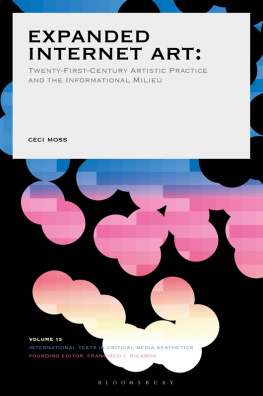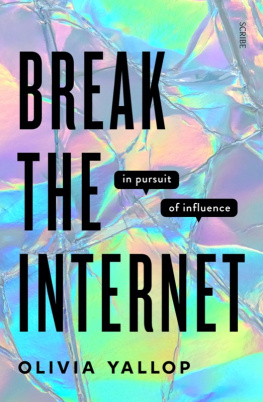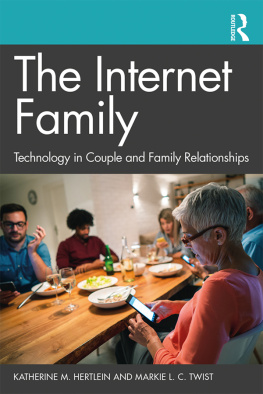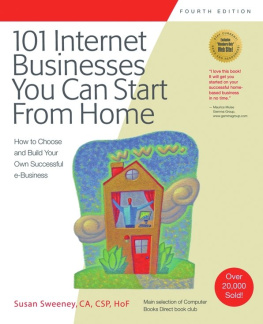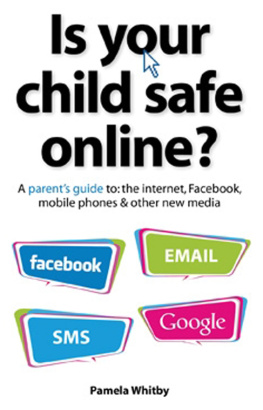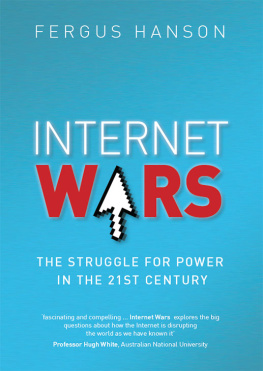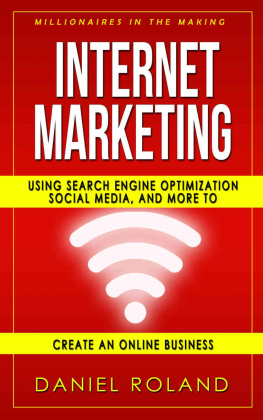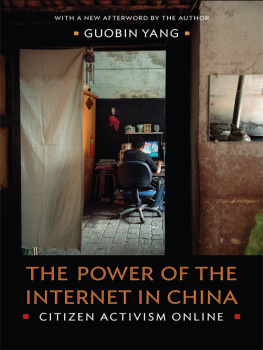Expanded Internet Art
INTERNATIONAL TEXTS IN CRITICAL
MEDIA AESTHETICS
Vol. 13
Founding Editor:
Francisco J. Ricardo
Series Editor:
Jrgen Schfer
Grant Taylor
Editorial Board:
Sandy Baldwin, Martha Buskirk, John Cayley, Tony Richards, Joseph Tabbi, Gloria Sutton, Gregory Zinman
Volumes in the series:
New Directions in Digital Poetry, C. T. Funkhouser
Cybertext Poetics: The Critical Landscape of New Media Literary Theory, Markku Eskelinen
Creative Enterprise: Contemporary Art between Museum and Marketplace, Martha Buskirk
The Engagement Aesthetic: Experiencing New Media Art through Critique, Francisco J. Ricardo
Software Takes Command, Lev Manovich
3D: History, Theory and Aesthetics of the Transplane Image, Jens Schrter
Projected Art History: Biopics, Celebrity Culture, and the Popularizing of American Art, Doris Berger
When the Machine Made Art: The Troubled History of Computer Art, Grant D. Taylor
The Internet Unconscious: On the Subject of Electronic Literature, Sandy Baldwin
Between Film, Video, and the Digital: Hybrid Moving Images in the Post-Media Age, Jihoon Kim
The Off-Modern, Svetlana Boym
Witness to Phenomenon: Group Zero and the Development of New Media in Postwar European Art, Joseph D. Ketner II
Expanded Internet Art
Twenty-First-Century Artistic Practice and the
Informational Milieu
Ceci Moss

One of the simple pleasures of book preparation, perhaps something not routinely mentioned, is the ability to revisit sources. During this process, I reread the following quote from Jean-Franois Lyotards Gloss on Resistance, where he states: The labor of writing is allied to the work of love, but it inscribes the trace of the initiatory event in language and thus offers to share it, if not as a sharing of knowledge, at least as a sharing of sensibility that it can and should take as communal.
I am immensely grateful for the love and support Ive received while I developed this project, which began during my PhD studies in Comparative Literature at New York University. Ive never been a passive observer, and Ive always felt it was necessary to actively work, talk, and learn with artists. Many of the ideas within these pages began in ordinary exchanges. Concepts hashed out over dinner or an art opening, studio visits, a reading group, etc. I want to begin by expressing my gratitude for the connections and kinship generated in these informal spaces and acknowledge their importancetheir communal sharing of sensibility, if you will.
I first read Tiziana Terranovas Network Culture: Politics for the Information Age in Professor Alexander Galloways Politics of Code class in fall 2010. The class was a game changer for me, and the papers I wrote during that seminar were the seeds for this project. I took almost all of my coursework with Professor Emily Apter, on everything from radical literature in 1970s France to pedagogy in theory. Her exhaustive knowledge of French philosophy spurred my own interest in the subject. Professor Lisa Gitelmans course on Print Media and Modernity was another highlight of graduate school and a reminder of medias own complicated history. I thank Alex, Emily, and Lisa for their insight, humor, and mentorship.
My experience at the groundbreaking arts organization Rhizome was also an inspiration, and Im forever grateful for the ideas, connections, and people that Ive encountered through this nonprofit. Rhizome introduced the brilliance of Lauren Cornell, John Michael Boling, Nick Hasty, Brian Droitcour, Jacob Gaboury, Zoe Salditch, Caitlin Jones, Zachary Kaplan, and Michael Connor to my life. My colleagues at the Yerba Buena Center for the Arts Dorothy Davila, Tesar Freeman, Susie Kantor, Katya Min, Rebecca Silberman, Martin Strickland, and John Cartwright championed the writing of this project on the sidelines of many exhibitions, public programs, tours, and the like. I thank my art family, near and far, Josh Kline, Rhonda Holberton, Dena Beard, Jasmine Pasquill, Jacqueline Kiyomi Gordon, Jessica Davies, Nick Hallett, Nate Boyce, Jeanne Gerrity, Paul Haney, Lauren Mackler, Lydia Brawner, Marcella Faustini, Nicole Ginelli, Sally Glass, Summer Guthery, Tim Steer, Victoria Keddie, Anna Frost, Sean Raspet, Kelani Nichols, Mat Dryhurst, Holly Herndon, Russell Etchen, George Chen, Lori Cole, Ann Hirsch, Gene McHugh, David Horvitz, Zanna Gilbert, and Carlin Wing. And my family, Larin Sullivan, Michael Moss, Stacey Moss, Sandra Reed, Michael Reich, Ruth Donohugh, Asa Donohugh, John Minnes, Ted Minnes, and William Minnes.
Special thanks to my Bloomsbury editors Francisco Ricardo, Jrgen Schfer, Grant D. Taylor, and Katie Gallof, and Thera Webb for additional edits. Francisco, in particular, was immensely supportive of this project, and he was an instrumental figure in its final publication. Im extremely grateful for his guidance and support in helping to develop the manuscript into a completed book.
To more shared sensibilities,
Ceci Moss
Los Angeles, CA
Jean-Franois Lyotard, Gloss on Resistance, in The Postmodern Explained: Correspondence 19821985, trans Don Barry, Berandette Maher, et al. (Minneapolis: University of Minnesota Press, 1992), 97.
Over the past decade, network culture had a significant impact on contemporary art practice. Internet art, once considered its own subset of art practice, underwent a metamorphosis, operating in a more hybrid fashion. Thorny issues around medium and categorization, which shadowed this type of art practice from its beginning, took on more weight as internet artists chose to address web culture both online and offline, through websites as well as sculptures and installations. At the same time, art critics, art historians, theorists, and curators attempted to create metaphors to describe what an informational culture does to art under what some have called a post-medium or post media era. For example, Nicolas Bourriaud calls for art to become a gas while David Joselit views art as functioning like a dynamic chain. This book proposes the term expanded to describe how art functions under these conditions. Why expanded? Expanded is defined by the Oxford English Dictionary as the action or process of spreading out or unfolding, lending the term an active quality that precisely reflects how networked artworks themselves continuously unfold. It was this process-like aspect of the term that felt accurate for the turn in art production discussed in this book.
The term expansion has a history within media arts own past. Gene Youngbloods seminal book from 1970 Expanded Cinema was definitely a reference and present in the early conversations that inspired this publication. While Youngblood provided a snapshot of experiments in cinema in the late 1960s that went beyond the screen, from the cosmic cinema of Jordan Belson to intermedia theater, the main impetus behind the book was truly what he saw as the emergence of expanded consciousness. His thesis, written very much in the spirit of his luminaries Marshall McLuhan and R. Buckminster Fuller (who also wrote the introduction to Expanded Cinema), is that While this book is quite far from the utopian rhetoric of Youngblood, his application of the term expanded to moving image echoed in some respects with the extension of the internet artwork onto other platforms discussed in this project.
The writing of this book began in 2012, and during its production, the term post internet art exponentially took off within the art world. The focus of exhibitions, public programs, magazine articles, and blog posts, post internet art is an attempt to articulate what art looks like in a post medium era., all of these conversations are trying to work through what it means if art is always online.
Next page
